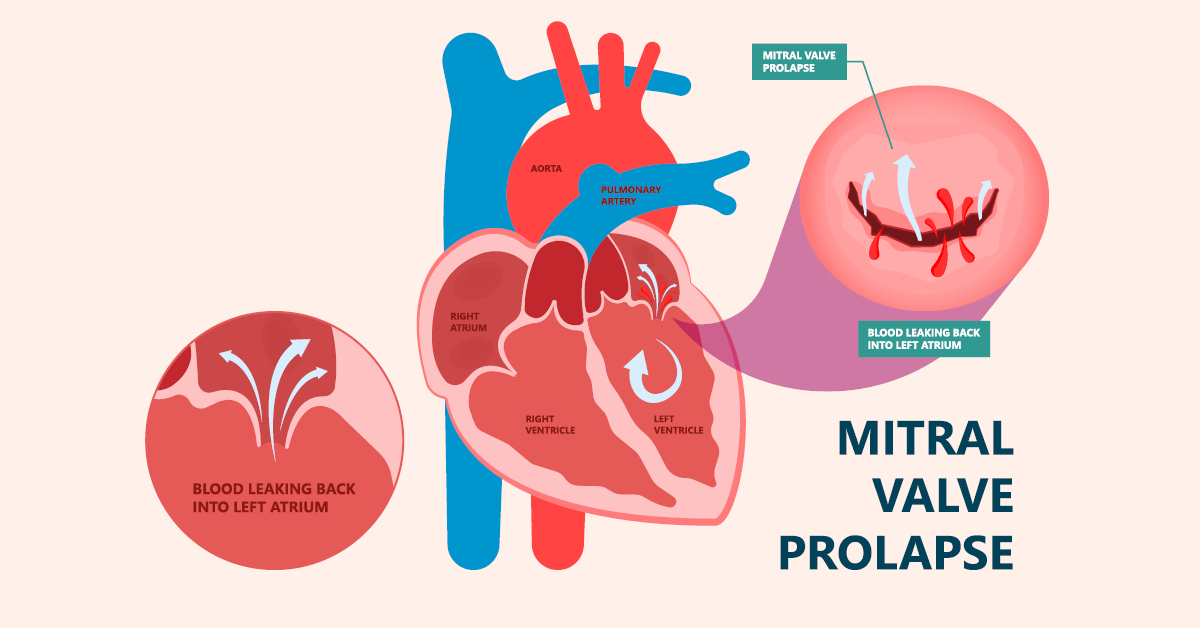Mitral Valve Prolapse: Symptoms, Diagnosis, and Treatment

Mitral valve prolapse is a fairly common valve disease that occurs in an estimated 3 to 5 percent of the population. The mitral valve consists of two valves that open and close to allow blood to flow into the left atrium. In patients with mitral valve prolapse, the valves do not open and close smoothly or evenly. The tissue in the flaps is abnormally stretchy and results in a bulge, or prolapse, into the left atrium. When the valves don’t close properly, blood can flow backward through the valve, which is called regurgitation. Other names for mitral valve prolapse include floppy valve syndrome, click-murmur syndrome, and Barlow’s syndrome.
There is a wide range of severity of the disease. Most people have little-to-no regurgitation, and often the only action required is an annual checkup to monitor the condition. Some people, however, have severe leakage that puts them at risk for further complications and, therefore, requires treatment.
Severe cases of mitral valve prolapse allow more blood than usual to remain in the atrium, which causes it to become enlarged. This can lead to a serious arrhythmia called atrial fibrillation and increase the risk of heart attack and stroke. The good news about mitral valve prolapse is that severe cases are rare, and there are treatment options available.
Symptoms of mitral valve prolapse
Often mitral valve prolapse carries few or no symptoms. When symptoms do occur, they may include heart palpitations, chest discomfort, fatigue, shortness of breath, or anxiety. If you have been diagnosed with mitral valve prolapse, it is important to understand that symptoms do not always correlate with severity of the disease. Your doctor will perform tests to determine the severity and what treatment is necessary.
Diagnosis of mitral valve prolapse
Diagnosis of mitral valve prolapse can sometimes happen during a regular physical exam, as the regurgitation creates a specific clicking sound when the doctor listens to the heart with a stethoscope. The clicking sound is followed by a murmur, which is where the alternative name of click-murmur syndrome comes from.
If your doctor suspects a prolapse, they may order an echocardiogram, cardiac catheterization, or a cardiac MRI to further investigate what is going on. The results of any tests, combined with your health history and any symptoms, will determine next steps for treatment or monitoring.
Treatment of mitral valve prolapse
In cases of mild mitral valve prolapse, the primary action is simply to monitor the condition at an annual checkup and ensure it doesn’t progress to a more severe case. Your doctor may recommend lifestyle changes, such as getting more exercise or changing your diet, to help protect your heart in general and reduce your risk of other heart disease.
If the condition is severe and has caused atrial fibrillation, treatment options may include medication to correct the arrhythmia and reduce the risk of stroke. If the regurgitation becomes severe, an arrhythmia develops, the left ventricle or atrium enlarges, or heart function decreases, your doctor may recommend surgery as the best course of treatment.
If you have been diagnosed with mitral valve prolapse or suspect you may have this condition, contact Oklahoma Heart Hospital to schedule an appointment with one of our specialists.
